Transonic Flow over the 3D Airfoil (Naca 0012) CFD Simulation, ANSYS Fluent Tutorial
$100.00 $50.00 Student Discount
- The present CFD Project simulates compressible air flow over Naca 0012 airfoil via ANSYS Fluent software.
- We modeled the geometry using ANSYS Design Modeler software and created the mesh using ANSYS Meshing software.
- The mesh type is structured, and the number of cells f is 1,560,000.
- The air property is selected as the ideal gas to model compressibility.
To Order Your Project or benefit from a CFD consultation, contact our experts via email (info@mr-cfd.com), online support tab, or WhatsApp at +44 7443 197273.
There are some Free Products to check our service quality.
If you want the training video in another language instead of English, ask it via info@mr-cfd.com after you buy the product.
Description
Description
In this project, the compressible air flow over Naca 0012 airfoil in 3-dimensional space is simulated. The 300K air enters the computational domain when the Mach number is assumed to be 0.7. The angle of attack is 2 degrees. This simulation focuses on using a pressure-based solver and a Coupled pressure-velocity coupling algorithm to model compressible flows instead of a Density-based approach.
First, the 2D geometry with several zone divisions was sketched and then extruded along the z-axis coordinate. Note that it was all done in Ansys Design Modeler software. In addition, the structured mesh grid was carried out in ANSYS Meshing software. As a result, 1,560,000 cells were generated.
Methodology: Transonic Flow over the 3D Airfoil
This simulation focuses on using a pressure-based solver and a Coupled pressure-velocity coupling algorithm along with the ideal-gas behavior of air density to model Compressible flows instead of a having Density-based approach. Also, the simulation is independent of Time, so it has performed in steady state form.
Conclusion
In this project, the Mach number of the flow was assumed to be 0.7, and there was transonic flow over the airfoil. Due to fluid compressibility, a density-based solver type should be hired. Still, we came up with using a pressure-based solver type and coupled velocity-pressure coupling algorithm. Also ideal-gas behavior of the density simultaneously. Notice that the viscosity was a function of temperature, so we used the Sutherland model.
As contours show, The velocity magnitude has a severe increase, and thereby, there is a pressure drop on the upper wall of the airfoil because of the 2-degree angle of attack. The pressure gradient generates lift and drag forces. Furthermore, there is a direct correlation between velocity and Mach number and similarly between density and pressure
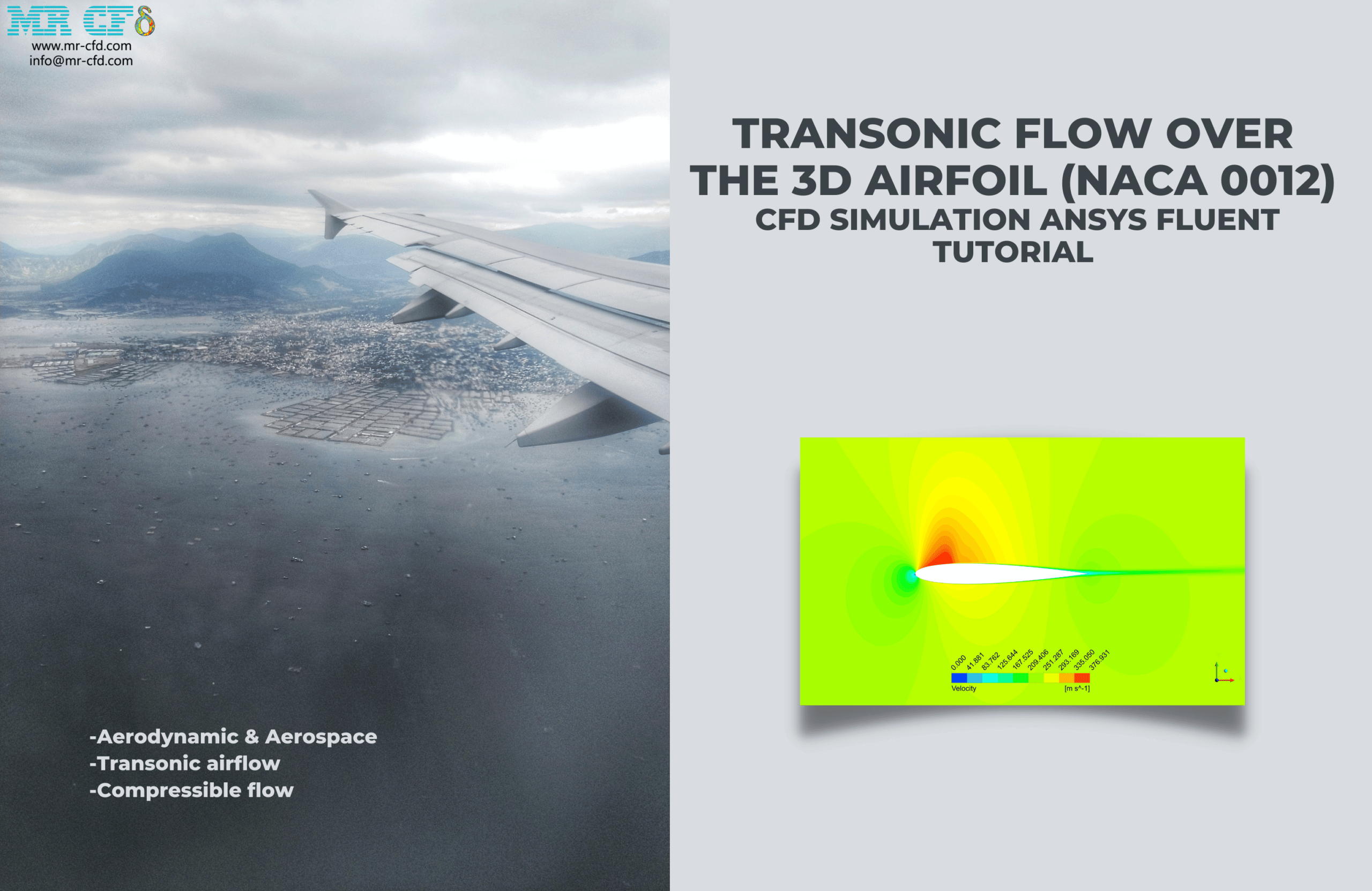

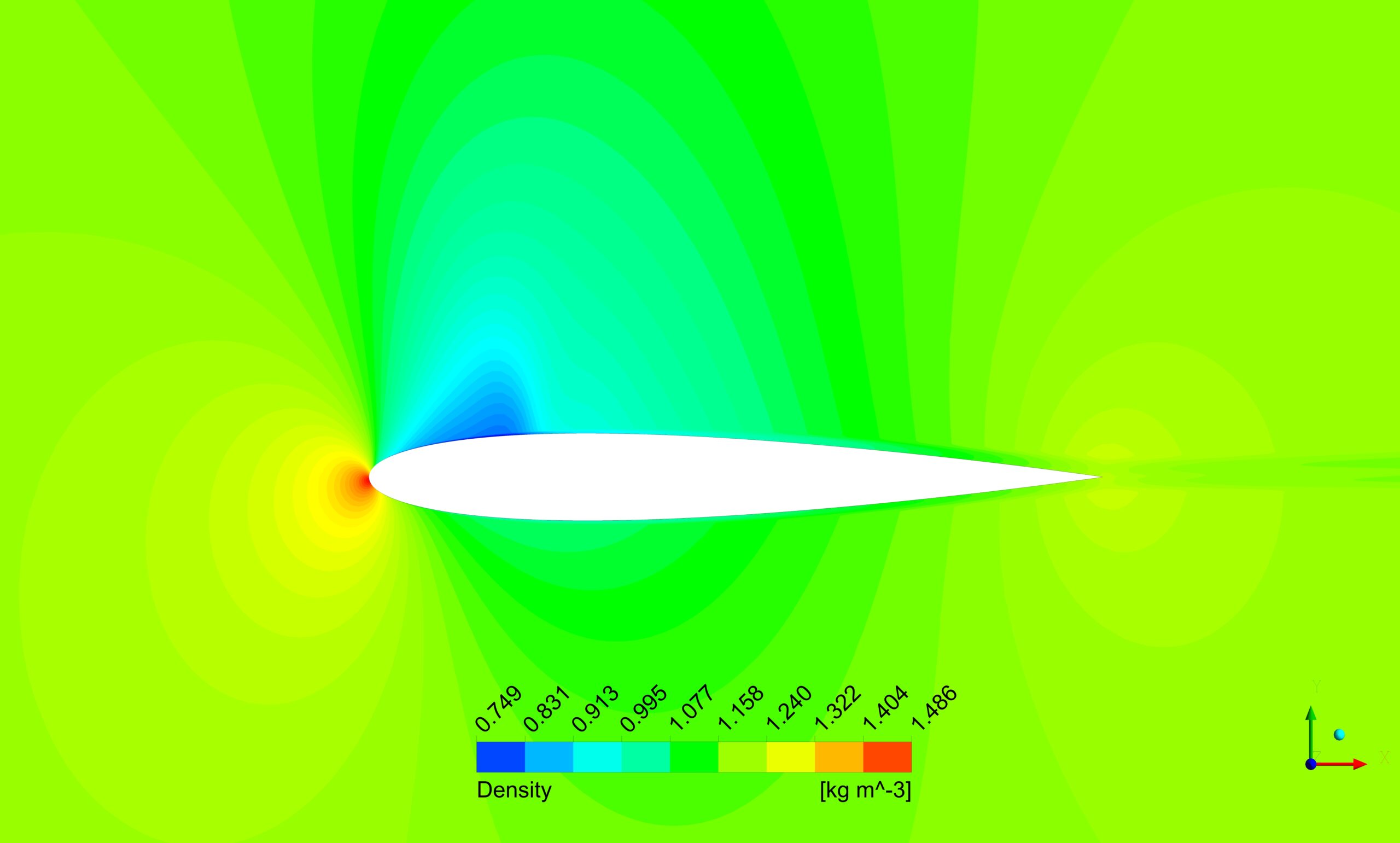
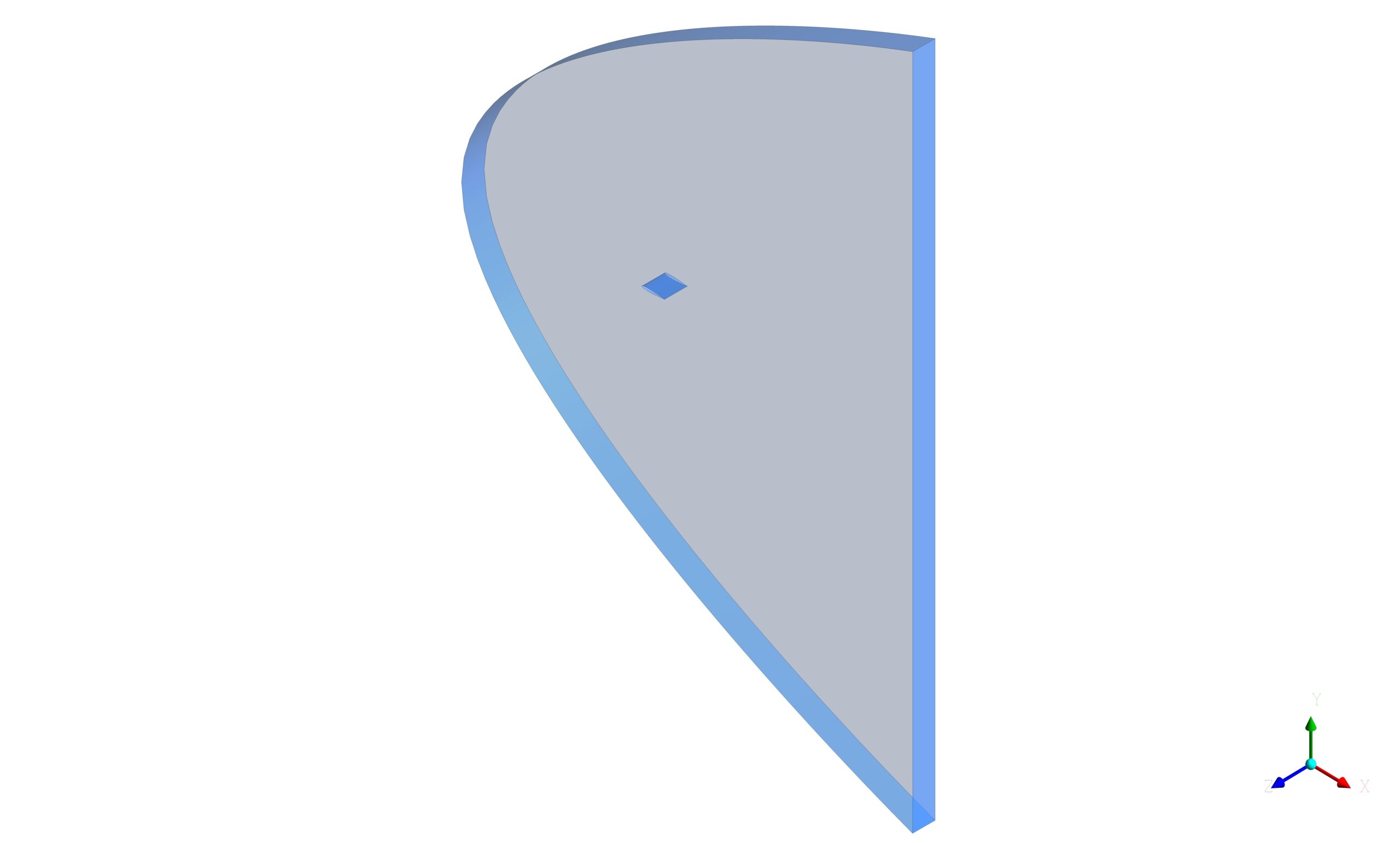
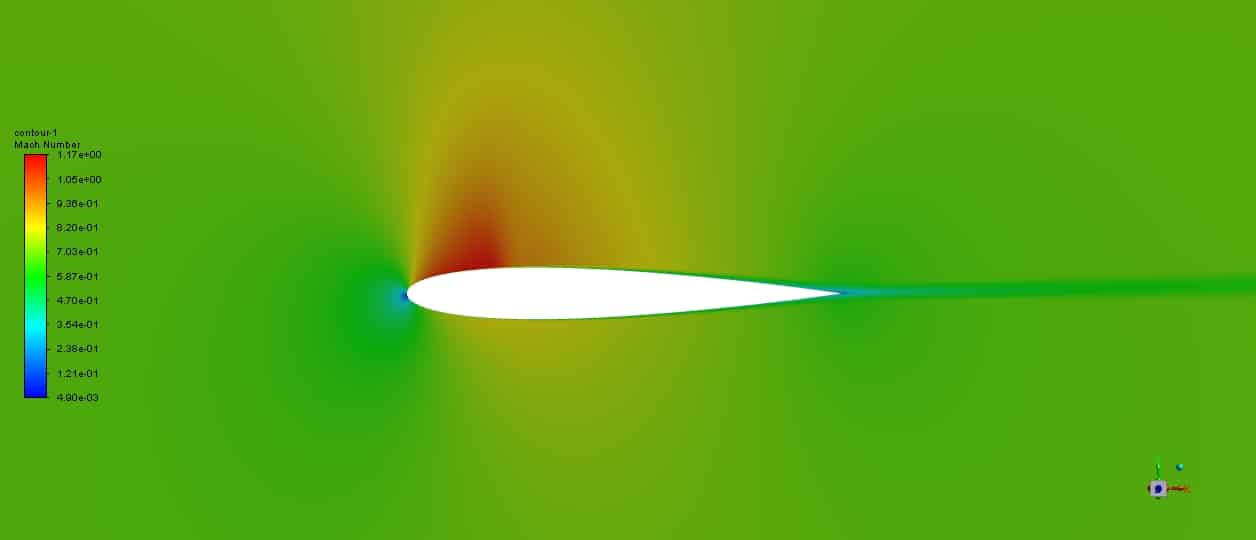
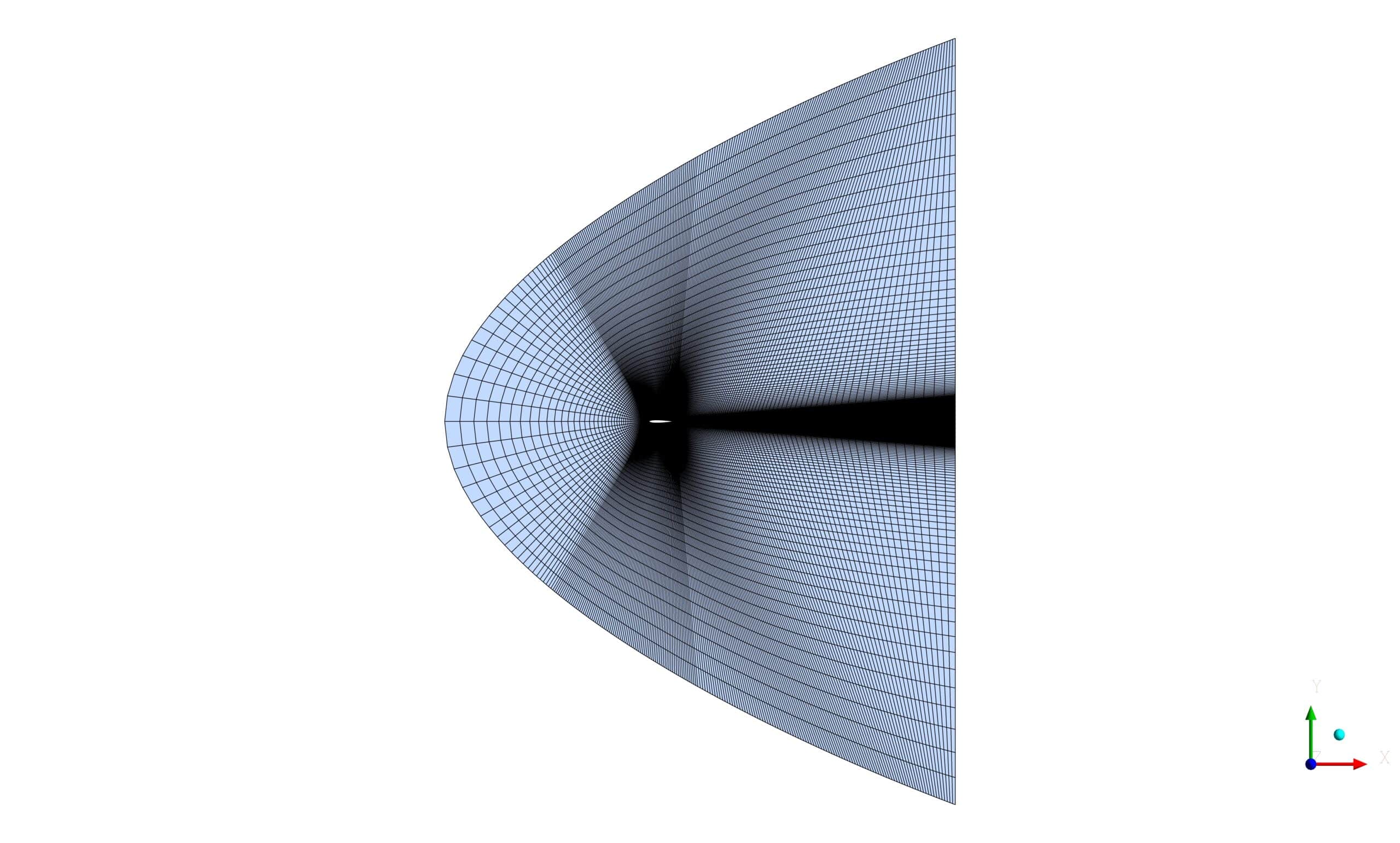
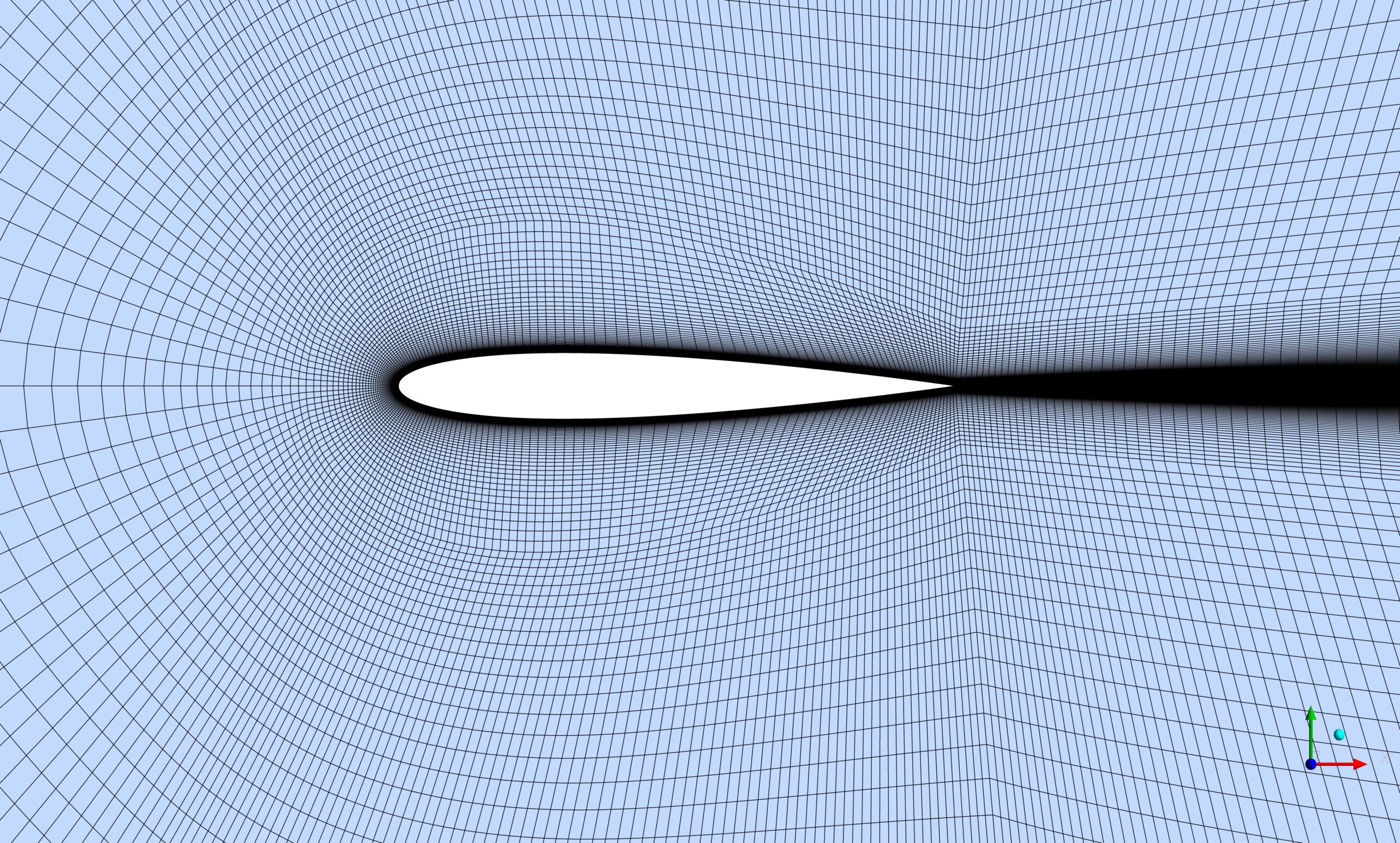
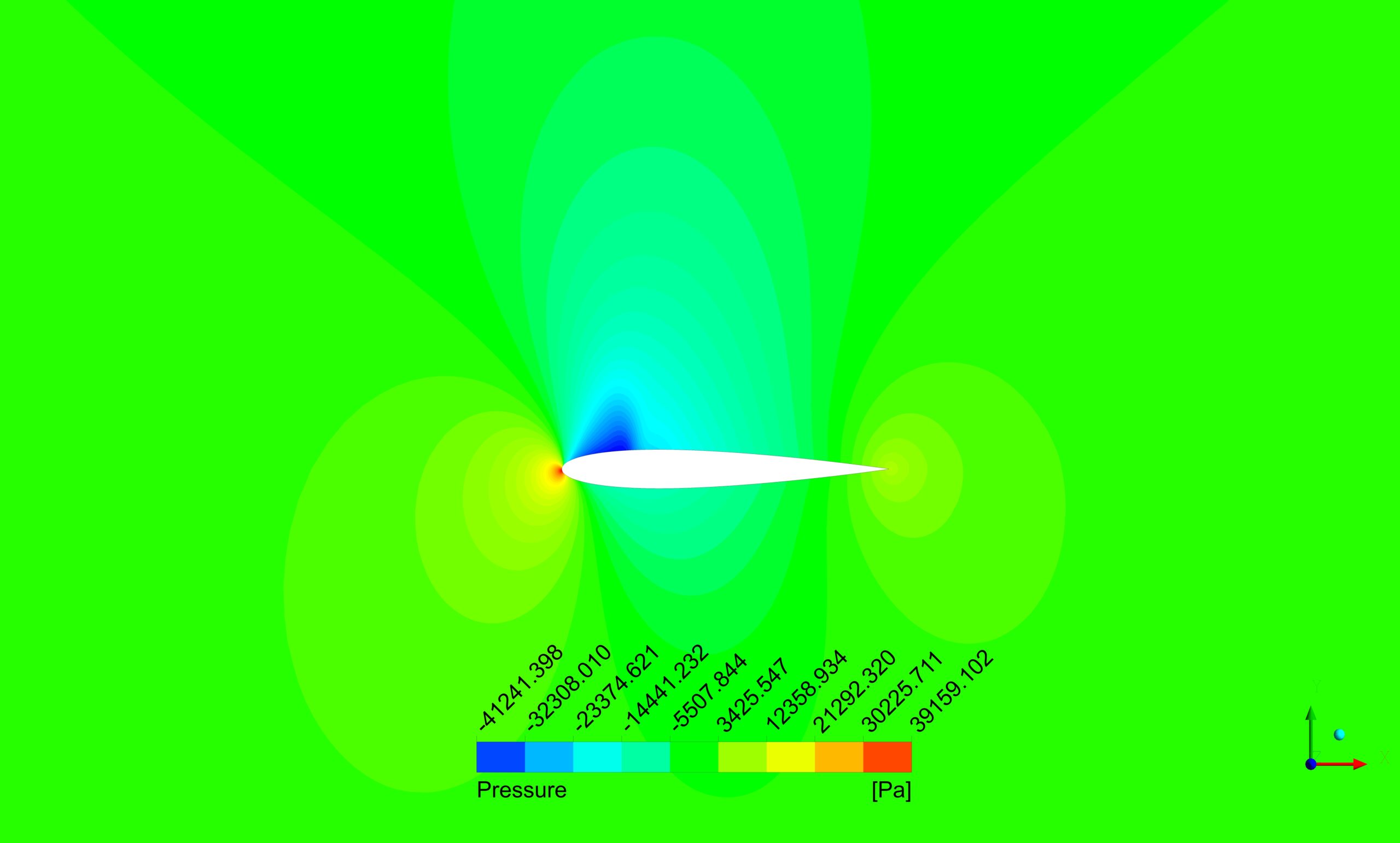
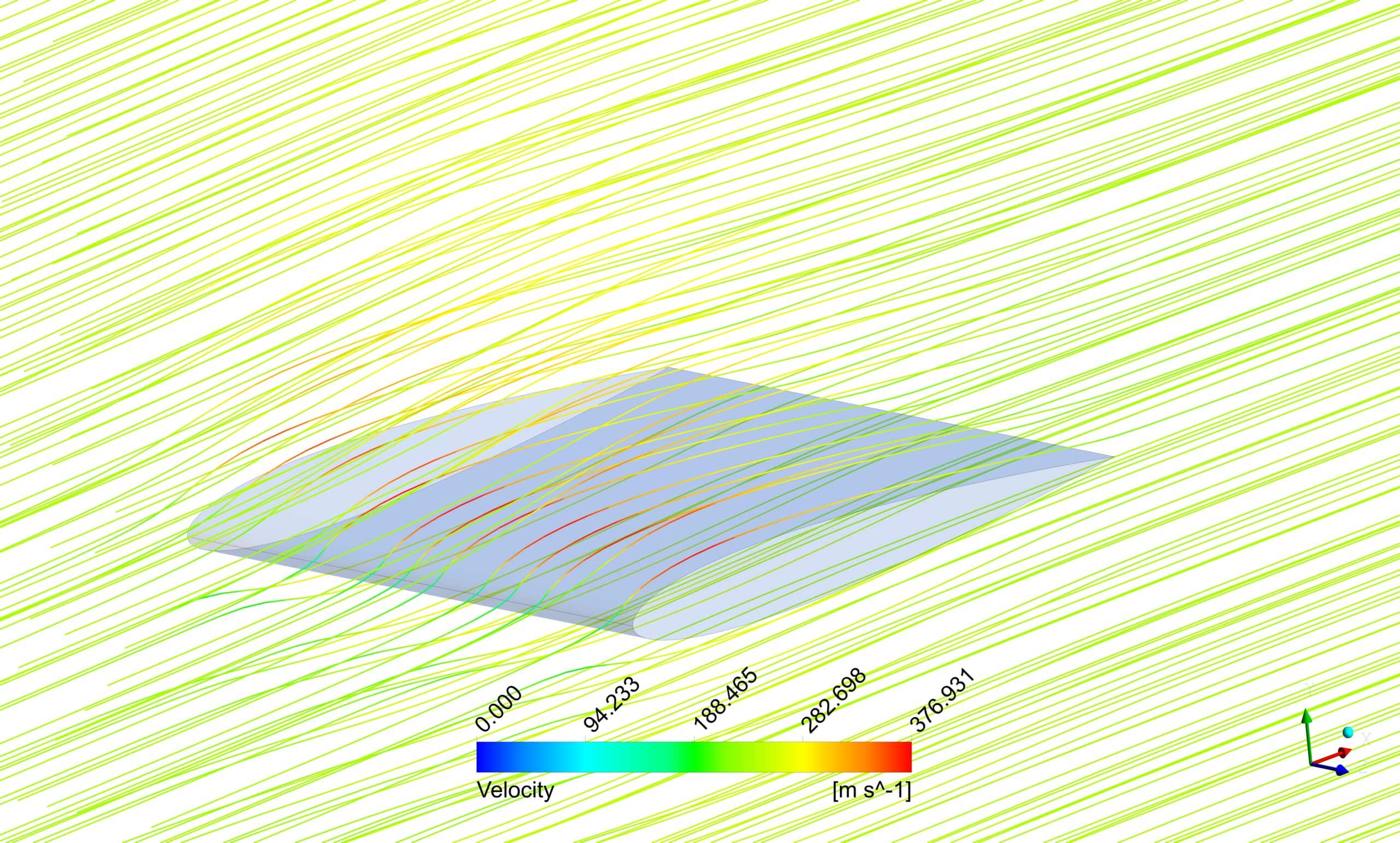
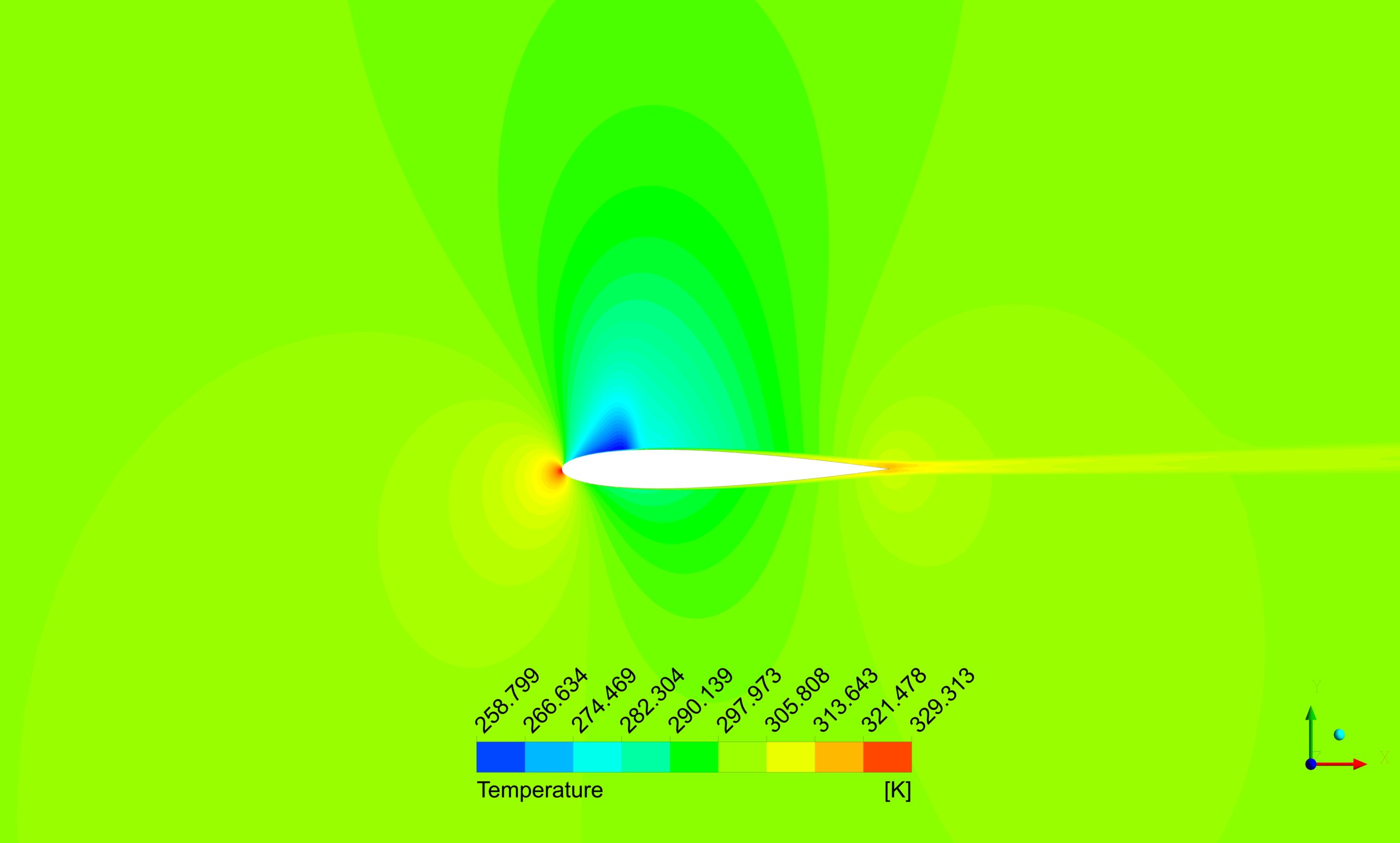
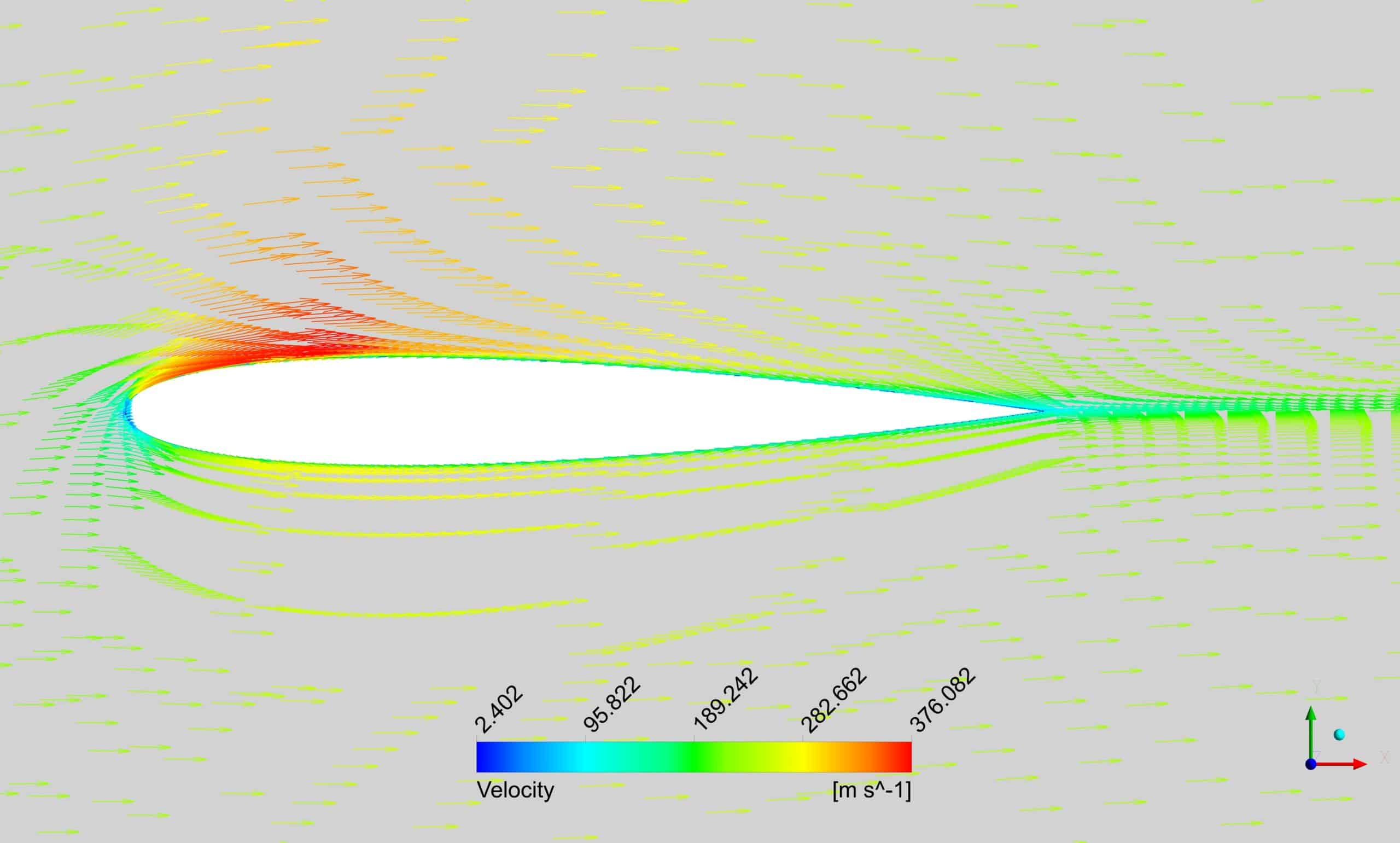
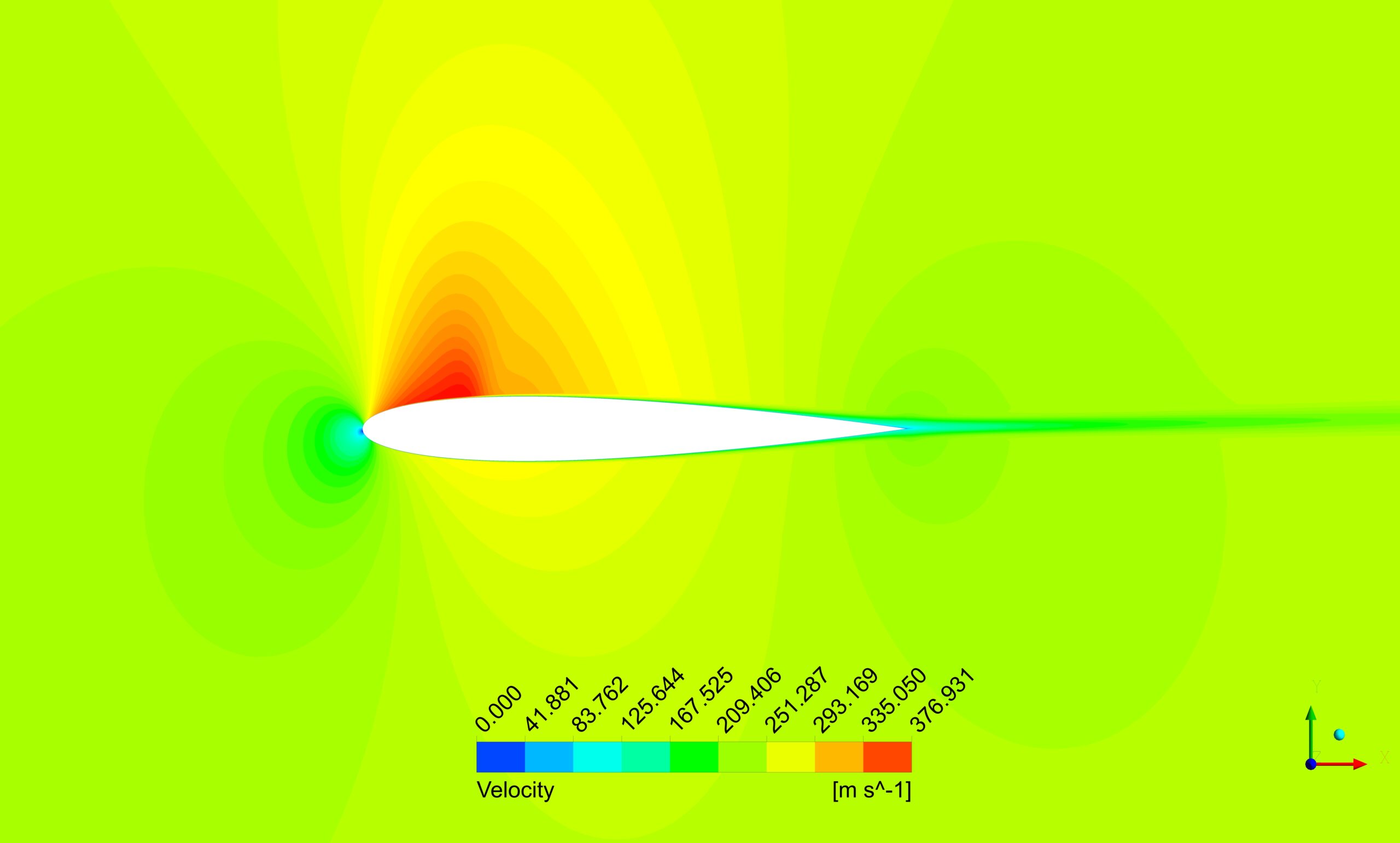
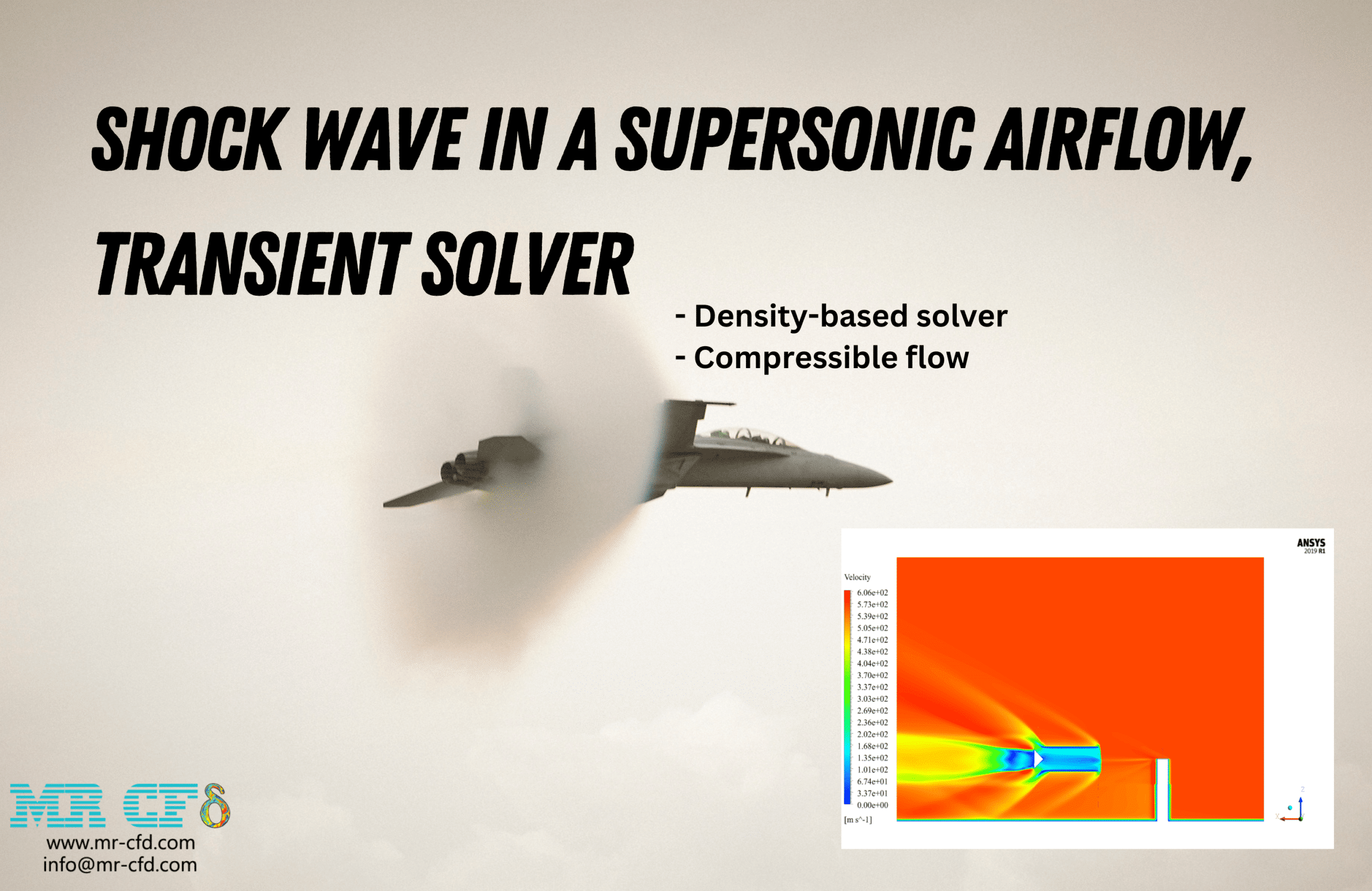



Shanon Wilkinson I –
I’m curious about the results in terms of lift and drag coefficients. Were those calculated in this transonic flow CFD simulation, and how did they compare with theoretical values or experimental data for the NACA 0012 airfoil at similar conditions?
MR CFD Support –
In the provided simulation, results like lift and drag coefficients are computed as a part of post-processing the solution data in ANSYS Fluent. The coefficients are obtained by integrating the pressure and shear stress distributions over the surface of the airfoil. To compare with theoretical or experimental data, one would typically examine reference studies or conduct experimental measurements under similar flow conditions to ensure the validity of the CFD model.
Bernita Keeling –
Is the transonic flow simulation on the Naca 0012 airfoil considering any shock waves phenomena, and how are those captured in the results?
MR CFD Support –
Yes, the transonic flow simulation over the Naca 0012 airfoil does consider shock wave phenomena. These are captured in the results through density, pressure, and Mach number contours. ANSYS Fluent allows for capturing such phenomena accurately with high-resolution schemes and appropriate mesh refinement in regions where shocks are expected to occur. You can see the effects of shock waves on the airfoil’s surface, where there are sudden changes in values like pressure and Mach number, indicative of a shock. The pressure-based solver with a coupled pressure-velocity algorithm, along with the ideal-gas assumption, effectively captures these rapid changes in the flow field at transonic speeds.
Celestine Turner –
The CFD simulation of transonic flow over the 3D airfoil is an excellent learning product for understanding compressible flow aerodynamics. The visuals indicated velocity increases and pressure changes on the airfoil surface, providing a clear and thorough explanation of lift and drag forces. The structured approach combined with high-quality meshwork made complex concepts easy to grasp. Kudos to the MR CFD team for a well-structured and informative tutorial that enhances understanding of airfoil behavior in transonic conditions.
MR CFD Support –
Thank you so much for your kind words! We’re thrilled to hear that our tutorial on transonic flow over a 3D airfoil has been clear and helpful to you. MR CFD is committed to providing high-quality and informative content that enhances learning and understanding of CFD concepts. We appreciate your feedback and are delighted that the tutorial met your expectations!
Kane Becker DDS –
The tutorial was exceptionally done! The transonic phenomena and the use of pressure-based solvers for compressible flow simulation were explained clearly. Furthermore, the results helped me understand the correlation between lift and drag forces with pressure gradients in a transonic regime. Great job!
MR CFD Support –
Thank you so much for your kind words! We’re thrilled to hear that our tutorial on transonic flow over the 3D Airfoil was helpful for you. Understanding the complex interactions in a compressible flow regime is crucial, and we’re glad our explanations on pressure gradients and force correlations were clear. We look forward to bringing you more quality educational content!
Eudora Haag MD –
Can this simulation detect the presence of the transonic shock wave on the airfoil, and if so, how does it visualize it?
MR CFD Support –
Yes, the simulation can detect the presence of a transonic shock wave on the airfoil. It visualizes the shock wave using the pressure and Mach number contours. The shock wave will appear as a sudden increase in pressure and a drop in Mach number, which is evident in the contours.
Prof. Lenny Dare –
This tutorial was an eye-opener on transonic flow simulations! Everything was so well-explained. I didn’t realize a pressure-based solver could handle compressible flows so effectively. Your step-by-step guide made it possible for me to replicate these results in my project.
MR CFD Support –
Thank you for taking the time to leave such a positive review! We’re thrilled to hear that the tutorial was useful for your project and that you were able to achieve good results. We strive to provide clear and comprehensive guides to our users, and it’s rewarding to know that this tutorial met your needs. Keep up the excellent work on your simulations, and don’t hesitate to reach out if you need any more assistance!
Xander Pacocha MD –
The project description was really fascinating! It’s great to see a transonic simulation methodically executed with a pressure-based solver against conventional expectations for density-based approaches in compressible flow regimes.
MR CFD Support –
Thank you so much for your kind words! We’re thrilled to hear that you found the project on the Transonic Flow over the 3D Airfoil interesting and that you appreciated the methodical execution of the simulation. It’s encouraging for our team to know that our efforts to deliver comprehensive and high-quality educational content are valued by our customers. If you ever have any more questions or need further assistance in your CFD learning journey, feel free to reach out to us. Thank you again for choosing MR CFD for your simulation studies!
Katelin Wehner –
The Naca 0012 airfoil tutorial was extremely helpful! Following along with the steps for setting up the pressure-based solver greatly deepened my understanding of modeling compressible flows in a transonic regime.
MR CFD Support –
Thank you for your positive feedback! We’re thrilled to hear our tutorial on the transonic flow over the Naca 0012 airfoil was instrumental in enhancing your comprehension of compressible flow simulation. If you have any more insights or require further assistance, please don’t hesitate to reach out.
Laura Brown –
Were any special turbulence models used in this simulation due to the transonic flow characteristics, or was it unnecessary?
MR CFD Support –
For the simulation of the transonic flow over the NACA 0012 airfoil, given the compressible nature of the flow and the Mach number being 0.7, a suitable turbulence model was indeed used. The aim was to accurately predict the shockwaves and their effects on the flow field, which are common phenomena in transonic flows. The specific turbulence model utilized and additional settings, however, were not mentioned in the provided description, but it’s common to use models that can accommodate changes in density and pressure for such scenarios.
Buster Schamberger –
The tutorial for the transonic flow over the 3D Naca 0012 airfoil was excellent. It covered every detail I needed to set up my own simulation. The explanation on why to use pressure-based solver instead of a density-based one, especially for transonic flows, was particularly enlightening.
MR CFD Support –
Thank you for your kind words! We’re delighted to hear that you found the tutorial to be comprehensive and helpful for setting up your simulation. Understanding the nuances of pressure-based vs. density-based solvers is critical for accurately modeling compressible flows, and we’re glad we could clarify that for you. If you have any further questions or need additional guidance, feel free to reach out!
Gino Hansen II –
The tutorial seems comprehensive, but I’m curious about how the Sutherland model is applied to the viscosity in relation to the temperature changes. Could you explain this?
MR CFD Support –
In the Sutherland model, the air viscosity is assumed to be a function of temperature. The model provides a method to correct the viscosity for temperature changes based on Sutherland’s formula. When the Sutherland model is invoked, software like ANSYS Fluent will automatically adjust the viscosity calculations based on local temperature fields according to the Sutherland parameters for air.
Gene Schuster –
The results from this study have been invaluable in understanding transonic flows and the performance of 3D airfoils. Thank you for such a comprehensive tutorial with detailed settings and clear explanations of the aerodynamic principles at play.
MR CFD Support –
Thank you so much for your positive feedback! We’re thrilled to hear that you found the tutorial comprehensive and helpful in understanding transonic flows and airfoil dynamics. Your appreciation means a lot to us. If you have any more questions or need further assistance in the future, feel free to reach out.
Prof. Waylon Murray –
The methodology described is impressive. I particularly find the usage of a coupled pressure-velocity coupling algorithm intriguing. Transonic simulations are challenging, and the technique used here to capture the flow characteristics around the 3D airfoil seems very effective.
MR CFD Support –
Thank you for your kind review! We’re delighted to hear that you appreciate the methodology and the detailing of the simulation used in this tutorial. Capturing the nuances of transonic flow over an airfoil is indeed a complex task, and we’re glad that we could convey the effectiveness of the pressure-based solver and coupled algorithm approach. Should you need further information or assistance with our products, please feel free to ask. Thank you for choosing our tutorials!
Miss Lacy Senger PhD –
The tutorial looks comprehensive. I appreciated learning about the approach using a pressure-based solver in a transonic flow situation, which is not always conventional – enlightening!
MR CFD Support –
Thank you for the positive feedback on our Transonic Flow over the 3D Airfoil (Naca 0012) CFD Simulation tutorial! We are glad that you found the unconventional solver approach informative and helpful. If you have further queries or require more learning resources, feel free to reach out. Happy learning with MR CFD!
Gloria West –
The animations provided a clear visualization. I wonder, were there any particular challenges encountered when setting up the pressure-based solver for transonic flow, and how were they addressed?
MR CFD Support –
We’re delighted that you found the animations helpful! Regarding your question, using a pressure-based solver for transonic flows can, indeed, present challenges as it is less conventional than a density-based solver for these speeds. However, with careful setup, including the gebruik of the coupled pressure-velocity coupling algorithm and accurate thermodynamic modeling using the ideal-gas law, we can achieve convergent and accurate solutions. Numerical settings such as under-relaxation factors and iterative solver controls also play a crucial role in ensuring stability and convergence. Thank you for your insightful question, and we’re glad you’re enjoying our product!
Mrs. Savanah Graham –
I was really impressed with this CFD tutorial! It was fascinating to see how the transonic flow behaviors were captured over the NACA 0012 airfoil, especially noting the advantages of using a pressure-based solver for compressible flows. The explanation on the selection of the Coupled pressure-velocity coupling algorithm was enlightening, as was the implementation of the Sutherland model for temperature-dependant viscosity. The realistic simulations of lift and drag forces due to pressure gradients truly showcased the capabilities of ANSYS Fluent.
MR CFD Support –
We truly appreciate your enthusiastic feedback about the Transonic Flow over the 3D Airfoil (Naca 0012) CFD Simulation tutorial. It’s wonderful to hear that our detailed explanation on solver choices and the behavior of compressible flows added value to your learning experience. We take great pride in creating high-quality educational materials that help users understand complex concepts easily using ANSYS Fluent. Your acknowledgment motivates us to keep delivering exceptional tutorials. Thank you for taking the time to share your thoughts!
Rosalee Hermiston –
I really appreciated the well-structured approach used in this simulation! Using a pressure-based solver for mimicking the transonic flow over a 3D airfoil and employing the coupled pressure-velocity coupling is a clever way of managing computational complexity. The concept of using ideal-gas equations and a steady state to study airflows at significant speeds is fascinating. Great job showcasing the challenging facets of aerodynamics through this detailed and methodical CFD tutorial.
MR CFD Support –
Thank you for your thoughtful review! We’re thrilled to hear that our approach to transonic flow simulation over a 3D Naca 0012 airfoil resonated well with you. Our team works diligently to create detailed and informative tutorials that navigate the complexities of aerodynamics, and it’s rewarding to know our efforts are appreciated. Your feedback is very valuable to us.
Jaylon Simonis –
The tutorial for the Transonic Flow over the 3D Airfoil was quite detailed and the explanations on the pressure-based solver and coupling algorithm were well done. I was able to follow steps and understand the concepts better. Great job!
MR CFD Support –
Thank you for your positive feedback! We’re delighted to hear that our tutorial on Transonic Flow over the 3D Airfoil has enhanced your understanding of CFD concepts and that you found the content informative and easy to follow. If you have any more questions or need further assistance, feel free to contact us.